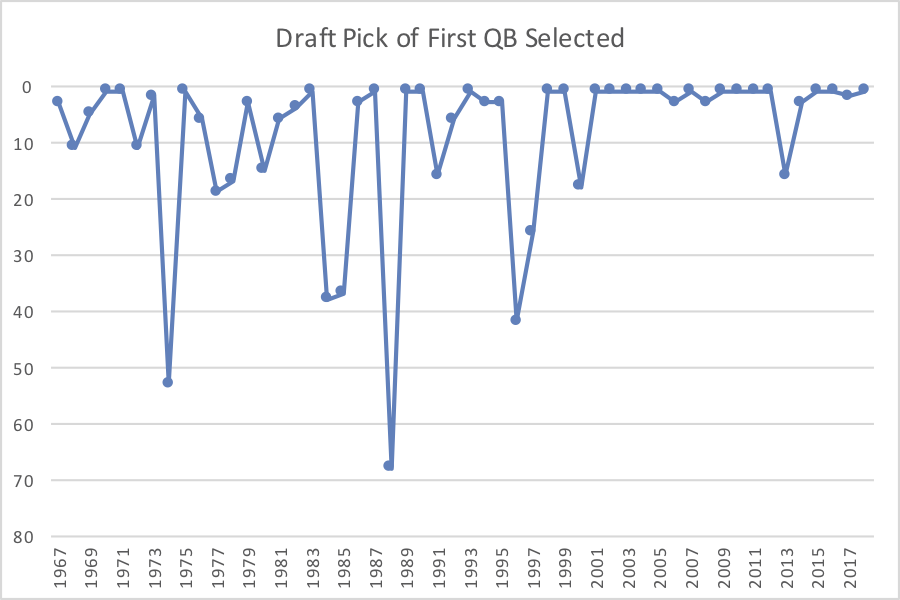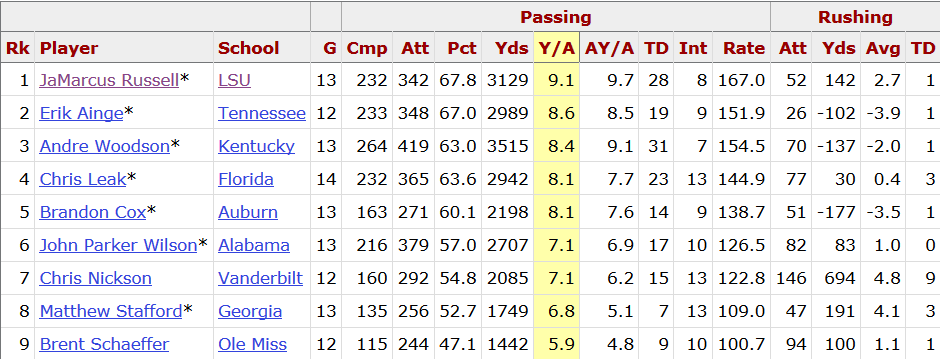
The player with the 12th-highest cap hit on the 2018 Rams. I wonder why?
This offseason, the Rams have traded for three high-profile players: WR Brandin Cooks (13 points of AV last year), CB Marcus Peters (13 points of AV in 2016, 5 points of AV last year), and CB Aqib Talib (14 points of AV in 2016, 9 points of AV last year). Los Angeles also signed DT Ndamukong Suh (12 points of AV in 2016, 7 points last year).
That’s some top-level talent, at least on paper. Suh was an AP first-team All-Pro in 2010, 2013, and 2014; the two All-Pro corners in 2016 by the Associated Press, Pro Football Writers Association, and the Sporting News were Talib and Peters. And Cooks is one of just three players to average 1,100 receiving yards and 8 touchdowns over the last three seasons.
And these four stars are joining perhaps the most star-studded team in the NFL: the Rams had six first-team All-Pros as selected by the Associated Press last year: RB Todd Gurley, LT Andrew Whitworth, and DT Aaron Donald, along with special teamers Greg Zuerlein, Johnny Hekker, and Pharoh Cooper. Oh, and by the way: QB Jared Goff led the NFL in Adjusted Net Yards per Attempt last season. Los Angeles is in position to spend in free agency in part because the team’s stars are cheap: the Rams drafted Donald in 2014 (with the team’s second first round pick, after drafting the biggest bust with its first selection), Gurley in 2015, and Goff in 2016, so all three players are being paid well below market value.
So, will the Rams really be as good in real life as they appear on paper? Los Angeles is adding four new players who had AVs of at least 12 points either last year or the year before. It’s been 23 years since a team did that, and that team was… the 1994 San Francisco 49ers. That offseason, they added CB Deion Sanders (AV of 12 in 1993), DE Richard Dent (AV of 12 in 1993), LB Ken Norton (AV of 15 in ’93), and LB Rickey Jackson (AV of 13 in ’93). The 49ers also added C Bart Oates (AV of 10 in ’93). The 49ers already had an incredible offense, and with a better defense — and a better performance against Dallas in the NFCCG — San Francisco finally won another Super Bowl.
In recent years, some other teams have added 4 players with 10 points of AV in the prior year (or two years prior). This includes the 2014 Broncos team that nearly won the Super Bowl but would win it a year later; Denver added DE/LB DeMarcus Ware, C Will Montgomery, S T.J. Ward, and … CB Aqib Talib.
The 2011 Eagles — aka The Dream Team — added CB Nnamdi Asomugha, WR Steve Smith (the bad one), DE Jason Babin, and CB Dominique Rodgers-Cromartie, in addition to backup QB Vince Young, who coined the name.
The 2009 Chiefs added QB Matt Cassel, LB Mike Vrabel, WR Chris Chambers, and G Mike Goff.
The 2008 Jets added G Alan Faneca, QB Brett Favre, LB Calvin Pace, and DT Kris Jenkins.
And the 2002 Redskins added LB Jeremiah Trotter, LB Jessie Armstead, OL Larry Moore, and WR Willie Jackson.
The only other teams in modern history: the ’96 Ravens (Eric Turner, Rob Burnett, Tony Jones, and Leroy Hoard), the ’94 Chiefs (Greg Kragen, Eric Martin, Jerrol Williams, and Mark Collins), and ’85 Bills (Joe DeLamielleure, Joe Cribbs, Mike Pruitt, and Vince Ferragamo).
Los Angeles is going all-in on its 2018 roster, which is admirable in many ways. It sure feels like Los Angeles is adding an unusual amount of blue chip talent, and based on these results, the Rams are in pretty rare company.
How do you think the Rams will fare?







